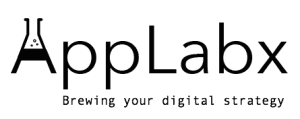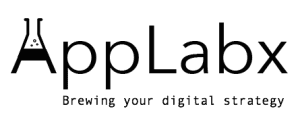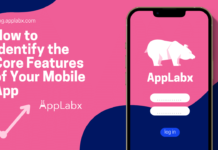Key Takeaways
- Master targeted keyword research to attract qualified traffic and boost Shopify sales.
- Identify untapped niches using data-driven tools to stand out in competitive markets.
- Implement and prioritize keywords strategically for long-term SEO growth and higher conversions.
In today’s hyper-competitive e-commerce landscape, simply setting up a Shopify store and listing your products is no longer enough. With millions of stores vying for customer attention, the success of your Shopify business hinges on one critical factor: visibility. And at the heart of visibility lies a powerful, often underestimated strategy—keyword research. Whether you’re launching a new online store or trying to scale an existing one, mastering keyword research can mean the difference between thriving with organic traffic or getting buried beneath your competitors.

Keyword research is the backbone of any successful SEO strategy. It allows you to understand exactly what your target audience is searching for on Google and how to position your store to meet that demand. But Shopify SEO isn’t just about finding high-volume keywords; it’s about discovering intent-driven search terms that directly align with what your customers need, want, or are ready to buy. More importantly, it’s about uncovering untapped niches—the low-competition, high-conversion opportunities that your competitors may be completely overlooking.
The beauty of Shopify as an e-commerce platform is its simplicity, scalability, and SEO-friendliness. But it won’t drive traffic on its own. Without proper keyword targeting, even the most beautifully designed product pages will struggle to appear on the first page of search results. The right keyword strategy doesn’t just improve your search rankings—it helps you craft product titles that convert, optimize collection pages that resonate with user intent, and create blog content that builds trust and authority.
This guide goes beyond basic keyword research. It is designed specifically for Shopify store owners who are serious about long-term organic growth. You’ll learn how to dig deep into your niche, analyze what your competitors are missing, and leverage tools—both free and paid—to extract valuable keyword insights. From seed keyword generation and SERP analysis to identifying micro-niches and mapping out content clusters, this comprehensive strategy will empower you to build an SEO foundation that supports sales and scales with your business.
We’ll also show you how to find untapped niches that other Shopify stores haven’t yet capitalized on. These hidden gems often carry less competition, higher buyer intent, and significantly better ROI. In an age where cost-per-click (CPC) is rising and paid advertising is becoming less sustainable for small businesses, organic discovery through strategic keyword optimization is not just an option—it’s a necessity.
Whether you’re selling handcrafted jewelry, eco-friendly pet supplies, or trending gadgets, this blog will give you the step-by-step insights needed to sharpen your SEO skills and position your Shopify store for long-term success. It’s time to stop guessing and start targeting the keywords that matter most. Let’s dive in.
But, before we venture further, we like to share who we are and what we do.
About AppLabx
From developing a solid marketing plan to creating compelling content, optimizing for search engines, leveraging social media, and utilizing paid advertising, AppLabx offers a comprehensive suite of digital marketing services designed to drive growth and profitability for your business.
AppLabx is well known for helping companies and startups use SEO to drive web traffic to their websites and web apps.
At AppLabx, we understand that no two businesses are alike. That’s why we take a personalized approach to every project, working closely with our clients to understand their unique needs and goals, and developing customized strategies to help them achieve success.
If you need a digital consultation, then send in an inquiry here.
How to Do Keyword Research for Your Shopify Store (and Find Untapped Niches)
- Why Keyword Research is Crucial for Shopify Stores
- Tools You’ll Need for Shopify Keyword Research
- Step-by-Step Guide to Doing Keyword Research for Shopify
- How to Find Untapped and Profitable Niches
- Organizing & Prioritizing Your Keyword List
- Bonus: Using Keywords in Your Shopify Store
- Common Mistakes to Avoid
1. Why Keyword Research is Crucial for Shopify Stores
Keyword research is not just a foundational SEO practice—it’s a strategic asset for every Shopify store owner. It directly influences how easily potential customers can find your store, how relevant your content is to their needs, and how effectively your products convert from views to sales. In 2025, where e-commerce competition continues to intensify, intelligent keyword research is more important than ever.
Understanding Buyer Intent Through Keywords
Not all keywords are created equal. Some indicate that the user is simply browsing, while others show strong purchasing intent. Identifying and targeting keywords based on buyer intent helps store owners meet customers exactly where they are in the purchase journey.
Types of Search Intent:
| Search Intent Type | Description | Example Keyword | Suggested Shopify Page |
|---|---|---|---|
| Informational | User is researching or learning | “how to choose running shoes” | Blog article |
| Navigational | User is looking for a specific brand/store | “Nike official site” | Homepage |
| Commercial Investigation | User is comparing before buying | “best trail running shoes 2025” | Blog or product comparison page |
| Transactional | User is ready to buy | “buy waterproof running shoes” | Product or collection page |
Why It Matters:
- Helps you tailor content to match the user’s mindset.
- Increases click-through rates by aligning meta titles and descriptions with intent.
- Improves conversion rates by targeting ready-to-buy users.
Boosting Organic Visibility on Google and Shopify Search
Keyword-optimized pages rank higher, appear in more relevant searches, and attract more qualified traffic.
Benefits of Targeted Keyword Usage:
- Appears in Google’s organic search results (SERPs)
- Ranks for internal Shopify search (crucial for in-store discoverability)
- Optimizes for voice search and mobile queries (e.g., “cheap eco tote bag near me”)
Example:
- A product titled “Organic Cotton Tote Bag – Eco-Friendly & Durable” will likely rank better than “Tote Bag Model #4532,” especially if keyword demand shows search volume for eco-related shopping.
Driving High-Intent Traffic Without Paid Ads
Keyword research lets Shopify merchants generate consistent, long-term traffic at no recurring cost, unlike paid campaigns that stop once budgets run out.
Cost Comparison Table:
| Marketing Method | Initial Cost | Ongoing Cost | Long-Term Benefit |
|---|---|---|---|
| Google Ads | Low | High | Stops when budget ends |
| Social Media Ads | Medium | High | Requires constant funding |
| SEO with Keywords | Medium | Low | Evergreen traffic |
Example:
- Targeting the keyword “vegan leather phone case” organically may get 2,000+ monthly searches, converting at 3–5%, whereas equivalent ad traffic could cost hundreds of dollars per month.
Unlocking Niche Market Opportunities
Keyword research isn’t just about volume—it’s about finding what others haven’t. Untapped long-tail keywords often represent niche customer groups with low competition and high buying potential.
Identifying Gaps Using Keyword Tools:
- Ahrefs “Content Gap” tool
- SEMrush “Keyword Magic” tool
- Ubersuggest’s “Low SEO Difficulty” filter
Matrix: Finding Keyword Opportunity
| Keyword | Search Volume | Difficulty Score | CPC Value | Niche Opportunity |
|---|---|---|---|---|
| “wireless cat water fountain” | 3,200 | 15 | $1.10 | High |
| “handmade ceramic incense holder” | 1,400 | 12 | $0.90 | Medium |
| “adjustable standing desk mat” | 2,500 | 45 | $3.50 | Low |
Insight:
- The first two keywords are untapped niches—lower competition and high intent.
- They allow newer Shopify stores to rank faster without needing huge backlink profiles.
Improving On-Site SEO and User Experience
Proper keyword mapping enhances on-site structure and internal linking.
How It Helps:
- Builds a strong site hierarchy (Home > Collections > Products > Blog)
- Prevents keyword cannibalization by assigning distinct topics to each page
- Improves anchor text optimization for internal linking
Keyword Mapping Example:
| Page Type | Target Keyword | Supporting Content Keywords |
|---|---|---|
| Homepage | “eco-friendly home goods” | “sustainable home decor,” “zero waste gifts” |
| Collection Page | “organic cotton kitchen towels” | “kitchen towel set organic,” “non-toxic dish towels” |
| Product Page | “grey organic cotton dish towel” | “soft eco dish towel,” “machine washable cotton towel” |
| Blog Post | “benefits of organic cotton towels” | “eco cotton vs regular,” “durability of organic cotton” |
Creating Content That Aligns with Your Customer’s Language
Keyword research reveals the exact phrases people are typing into Google. This helps Shopify store owners:
- Write product descriptions using natural, high-ranking phrases
- Optimize meta tags that resonate with searchers
- Create blog topics based on real customer interests
Example:
- Keyword: “best shampoo for curly hair without sulfates”
- Content idea: Blog titled “Top 5 Sulfate-Free Shampoos for Curly Hair in 2025”
- Product Description: “This sulfate-free shampoo is perfect for curly hair types looking for hydration without harsh chemicals.”
Enabling Data-Driven Decision Making
By understanding keyword trends and metrics, store owners can prioritize efforts based on data, not guesswork.
What to Look For:
- Search Volume: Indicates demand
- Keyword Difficulty: Measures ranking challenge
- Click-Through Rate Potential: Estimated visibility on SERPs
- Seasonality: Reveals peak interest periods
Monthly Trend Chart Example: “Christmas-themed dog sweaters”
| Month | Search Volume |
|------------|----------------|
| January | 200 |
| July | 300 |
| October | 1,500 |
| November | 5,000 |
| December | 6,800 |
Conclusion:
- You should plan content and inventory ahead of Q4 to capture seasonal demand spikes.
By conducting effective keyword research, Shopify store owners can:
- Align content with user intent
- Target valuable, underserved niches
- Drive free, qualified traffic
- Increase product discoverability and sales
- Build a long-lasting SEO strategy tailored to their brand
2. Tools You’ll Need for Shopify Keyword Research
The success of your Shopify SEO strategy relies heavily on the tools you use to find, filter, and validate keywords. The right tools will not only help you uncover high-potential keywords but also give you insight into competition levels, search intent, seasonal trends, and even keyword gaps that your competitors haven’t targeted. This section breaks down the essential tools—both free and paid—tailored for Shopify store owners looking to scale organic traffic and find untapped niches.
Free Tools for Shopify Keyword Research
Free tools are a great starting point, especially for beginners or small businesses operating on a tight budget.
- Accessible via Google Ads (free with account)
- Best for estimating search volumes and CPC
- Great for validating transactional keyword ideas
Example Use Case:
- Type in “vegan leather wallet”
- Discover related terms like “eco-friendly wallet,” “non-leather men’s wallet,” etc.
- Visualizes interest over time and compares keyword popularity
- Useful for spotting seasonal patterns and trending niches
Example Trend Comparison:
Keyword A: “cotton tote bag”
Keyword B: “jute tote bag”
Keyword C: “canvas grocery bag”
| Month | Cotton Tote | Jute Tote | Canvas Bag |
|-----------|-------------|-----------|------------|
| January | 80 | 40 | 20 |
| June | 95 | 60 | 30 |
| December | 60 | 30 | 50 |
3. AnswerThePublic
- Maps keyword suggestions into question-based formats
- Ideal for blog topic ideas and long-tail queries
4. Ubersuggest
- Offers keyword ideas, search volume, SEO difficulty, and backlink data
- Free version gives limited daily queries
5. Keyword Surfer (Chrome Extension)
- Displays keyword volume directly in Google search results
- Shows related keywords and their estimated traffic
Paid Tools for Advanced Shopify Keyword Research
Investing in paid tools enables more precise targeting, deeper insights, and competitive advantage.
1. Semrush
- Offers Keyword Magic Tool for deep keyword clustering
- Includes competitive analysis and keyword gap tools
- Tracks keyword positions over time
Example Use Case:
- Identify low-competition keywords like “vegan laptop sleeve” with volume and keyword difficulty filters
2. Ahrefs
- Provides Keyword Explorer, SERP analysis, and content gap audit
- Strong backlink analysis to assess keyword competitiveness
Ahrefs Keyword Matrix Example:
| Keyword | Volume | KD (Difficulty) | CPC | Clicks |
|---|---|---|---|---|
| “zero waste kitchen kit” | 1,900 | 13 | $1.80 | 1,300 |
| “plastic free lunchbox” | 2,100 | 18 | $2.50 | 1,600 |
| “bamboo cutlery set” | 5,400 | 22 | $1.10 | 4,200 |
3. LowFruits.io
- Designed specifically for finding low-competition keyword opportunities
- Highlights SERPs with weak competition (forums, low-authority blogs)
Best For:
- New Shopify stores with limited authority
- Long-tail keyword discovery
4. KWFinder (by Mangools)
- Visual and easy-to-use interface
- Provides keyword trends, difficulty, and domain strength insights
Feature Highlight:
- Color-coded keyword difficulty scoring (green = easy, red = hard)
5. Moz Keyword Explorer
- Good for SERP feature identification
- Displays organic CTR, priority score, and difficulty
Shopify-Specific SEO Plugins and Apps
Shopify’s App Store offers SEO tools that integrate directly into your storefront to optimize on-page keyword targeting.
1. Plug in SEO
- Scans your Shopify site for keyword usage in titles, meta descriptions, headers
- Suggests keyword improvements for product pages
2. SEO Manager by venntov
- Lets you edit meta data, image alt tags, and JSON-LD
- Tracks keyword rankings and integrates with Google Search Console
3. Smart SEO
- Automatically generates meta tags based on keyword templates
- Supports multi-language SEO (important for global Shopify stores)
4. Avada SEO Suite
- On-page optimization + keyword suggestions
- Automated SEO audits to improve keyword targeting performance
Keyword Comparison Matrix: Free vs Paid Tools
| Tool Name | Type | Keyword Volume | Keyword Difficulty | SERP Analysis | Competitor Research | Shopify Integration | Ideal For |
|---|---|---|---|---|---|---|---|
| Google Keyword Planner | Free | Yes | Basic | No | No | No | Beginners validating ideas |
| Ubersuggest | Freemium | Yes | Yes | Yes | Limited | No | Budget-conscious SEOs |
| Ahrefs | Paid | Yes | Yes | Yes | Yes | No | In-depth analysis and tracking |
| Semrush | Paid | Yes | Yes | Yes | Yes | No | Enterprise-level SEO strategy |
| Plug in SEO | Shopify App | No | No | No | No | Yes | On-page Shopify SEO optimization |
| LowFruits.io | Paid | Yes | Yes | Yes | Partial | No | Long-tail, low-competition niches |
Integrating Tool Usage into a Workflow
To maximize keyword research efforts, Shopify store owners should build a keyword research pipeline that moves from discovery to implementation:
Step-by-Step Workflow:
- Keyword Discovery
- Tools: Google Keyword Planner, AnswerThePublic, LowFruits
- Goal: Identify seed and long-tail keywords
- Volume & Difficulty Validation
- Tools: Ubersuggest, KWFinder, Ahrefs
- Goal: Filter keywords based on competition and value
- Competitive Gap Analysis
- Tools: Semrush, Ahrefs
- Goal: Find keywords your competitors rank for—but you don’t
- Trend & Intent Analysis
- Tools: Google Trends, Moz, AnswerThePublic
- Goal: Ensure keywords match seasonal and intent-based opportunities
- On-Page Optimization
- Tools: Plug in SEO, SEO Manager
- Goal: Add target keywords to Shopify product, collection, and blog pages
Conclusion
Whether you’re starting a new Shopify store or scaling an existing one, using the right mix of keyword research tools is essential for uncovering profitable search terms and gaining a competitive edge. Free tools are great for foundational research and quick validation, while paid tools offer deeper analytics, competitor benchmarking, and SERP data crucial for long-term SEO success.
3. Step-by-Step Guide to Doing Keyword Research for Shopify
To rank your Shopify store and attract highly targeted organic traffic, keyword research must be a structured and data-driven process. This comprehensive, step-by-step guide outlines how to conduct effective keyword research tailored specifically for Shopify stores—from brainstorming to implementation. Each stage includes examples, best practices, and tools to help you find profitable keywords and untapped niches that convert.
Step 1: Identify Your Niche and Core Products
Before you start researching keywords, you need to clearly define your niche and the products or categories you want to rank for.
How to Define Your Shopify Niche:
- Focus on a specific product type, target audience, or problem.
- Analyze your product categories and unique selling propositions.
Example Niches:
- Eco-friendly home products
- Fitness gear for seniors
- Minimalist men’s fashion
- Organic baby skincare
Niche Clarification Table:
| Product Category | Target Audience | Niche Angle |
|---|---|---|
| Bamboo Toothbrushes | Eco-conscious adults | Zero-waste lifestyle products |
| Posture Corrector Braces | Remote workers | Health gear for digital professionals |
| Vegan Leather Backpacks | College students | Sustainable fashion accessories |
Step 2: Brainstorm Seed Keywords
Seed keywords are the foundation for discovering long-tail and niche keyword variations.
Where to Source Seed Keywords:
- Product titles and descriptions
- Customer FAQs and reviews
- Competitor store listings
- Google’s autofill and “People also ask”
Example:
For a Shopify store selling “vegan skincare”:
- Seed keywords: “vegan face wash,” “cruelty-free cleanser,” “plant-based moisturizer”
Seed Keyword Table Example:
| Product | Seed Keyword | Intent Type |
|---|---|---|
| Vegan Facial Cleanser | “vegan face wash” | Transactional |
| Moisturizing Night Cream | “plant-based night cream” | Commercial |
| Exfoliating Scrub | “natural face exfoliator” | Informational |
Step 3: Expand Keyword List Using Tools
Use keyword research tools to generate keyword ideas, validate search volume, and analyze keyword difficulty.
Best Tools for Expansion:
- Google Keyword Planner
- Ahrefs Keyword Explorer
- Ubersuggest
- Semrush Keyword Magic Tool
- LowFruits.io
Metrics to Analyze:
- Search Volume: Monthly search frequency
- Keyword Difficulty (KD): Competitive challenge (0–100 scale)
- CPC: Commercial value for paid ads
- Clicks: Actual user engagement after search
Keyword Expansion Matrix:
| Keyword | Volume | KD Score | CPC | Clicks | Intent |
|---|---|---|---|---|---|
| “vegan face wash” | 8,000 | 26 | $2.10 | 5,500 | Transactional |
| “best cruelty-free cleanser” | 2,400 | 19 | $1.30 | 1,800 | Commercial |
| “how to use natural toner” | 1,200 | 9 | $0.70 | 900 | Informational |
Step 4: Analyze Competitor Keywords
Review competitor stores to identify what keywords they are ranking for that you may have missed.
How to Analyze Competitors:
- Use Ahrefs’ “Site Explorer” or Semrush’s “Domain Overview”
- Look at their top pages and organic keyword list
- Use “Content Gap” feature to find missed opportunities
Competitor Comparison Table:
| Competitor Domain | Top Keyword | Ranking Page | Monthly Traffic |
|---|---|---|---|
| veganbeautyshop.com | “vegan anti-aging serum” | /products/anti-aging-serum | 2,100 |
| crueltyfreeshop.net | “natural eye cream” | /collections/eye-care | 1,800 |
| ecofaceskincare.co | “plant-based face cream” | /blog/best-vegan-creams | 1,200 |
Step 5: Cluster Keywords by Topic and Intent
Group keywords into related clusters to optimize your store structure and content strategy.
Keyword Cluster Examples:
| Cluster Name | Keywords in Cluster | Page Type |
|---|---|---|
| Vegan Cleansers | “vegan face wash,” “natural cleanser,” “gentle vegan cleanser” | Product or collection |
| Cruelty-Free Moisturizers | “plant-based moisturizer,” “vegan face cream,” “hydrating cruelty-free lotion” | Product page |
| Skincare Blog | “how to build a vegan skincare routine,” “benefits of plant-based skincare” | Blog post |
Why It Matters:
- Prevents keyword cannibalization
- Strengthens topical authority
- Improves internal linking structure
Step 6: Filter for Low-Competition and Long-Tail Keywords
Long-tail keywords are specific, less competitive, and usually have higher buyer intent.
How to Identify Long-Tail Opportunities:
- Use filters in tools like LowFruits or Ubersuggest to sort by:
- KD under 20
- Volume between 100–2,000
- Check SERP composition (avoid targeting pages with heavy e-commerce brands or Amazon unless your authority is high)
Long-Tail Keyword Matrix:
| Long-Tail Keyword | Volume | KD | Intent Type | Example Page |
|---|---|---|---|---|
| “vegan face wash for sensitive skin” | 1,100 | 14 | Transactional | Product page |
| “best vegan cleanser for dry skin” | 700 | 10 | Commercial | Comparison blog post |
| “is cruelty-free skincare better?” | 500 | 9 | Informational | Educational blog article |
Step 7: Map Keywords to Shopify Pages
Assign each keyword or keyword cluster to a specific Shopify page: product, collection, blog, or homepage.
Mapping Guide Table:
| Page Type | Target Keyword | Supporting Keywords |
|---|---|---|
| Homepage | “vegan skincare store” | “cruelty-free beauty,” “eco face care” |
| Product Page | “plant-based eye cream” | “vegan eye serum,” “organic under-eye” |
| Collection Page | “cruelty-free moisturizers” | “natural face lotions,” “hydrating vegan cream” |
| Blog Article | “how to build a vegan skincare routine” | “morning vegan skincare,” “best cruelty-free products” |
Step 8: Validate Keywords in SERP Results
Before finalizing your keyword targets, validate the SERP (Search Engine Results Page) to check competitiveness and content format.
What to Check:
- Are results mostly product pages, blogs, or marketplaces?
- Are top-ranking domains high-authority (e.g., Amazon, Sephora)?
- Are there any featured snippets or People Also Ask boxes?
SERP Validation Checklist:
| Factor | What to Look For | Implication |
|---|---|---|
| Domain Authority | Low-DA sites on Page 1 | Easier to rank |
| Content Type | Matches your intended format | Higher relevance |
| Content Gaps | Outdated info or weak blog posts | Opportunity to outperform |
| SERP Features | Featured Snippet available | Opportunity to optimize content |
Step 9: Track Keyword Performance Post-Publishing
Once you’ve implemented your keyword strategy, track rankings, traffic, and conversions to measure success.
Best Tools for Tracking:
- Google Search Console
- Ahrefs Rank Tracker
- Semrush Position Tracking
- Shopify Analytics (track product page views, conversion rates)
Keyword Performance Dashboard Example:
| Keyword | Rank (Start) | Rank (Current) | Clicks | Conversion Rate |
|---|---|---|---|---|
| “vegan face wash” | 65 | 12 | 1,300 | 3.2% |
| “plant-based eye cream” | 34 | 8 | 800 | 4.5% |
| “eco-friendly face lotion” | Not ranked | 21 | 400 | 2.9% |
Final Thoughts
Executing a data-backed, intentional keyword research strategy is one of the most powerful things you can do to grow your Shopify store organically. From niche identification and competitor analysis to SERP validation and keyword mapping, this step-by-step approach ensures you’re not just driving traffic—but attracting buyers.
4. How to Find Untapped and Profitable Niches
Identifying untapped and profitable niches is a powerful way to dominate underserved markets, reduce competition, and increase conversions. For Shopify store owners, this means discovering demand pockets that other brands haven’t yet fully exploited—allowing you to build authority, rank faster, and generate sales with minimal advertising cost. This section offers a step-by-step breakdown of proven methods and tools to uncover niche ideas that are both search-driven and buyer-focused.
Step 1: Understand What Makes a Niche “Untapped” and “Profitable”
Before jumping into discovery methods, it’s essential to define two key criteria:
What is an Untapped Niche?
- Low competition in organic search
- Few major players or marketplaces dominating the SERP
- High opportunity for topical authority
- Underexploited or emerging demand
What is a Profitable Niche?
- High buyer intent
- Reasonable or premium average order value (AOV)
- Repeat purchase potential
- Market scalability and trends
Niche Validation Matrix:
| Criteria | Untapped | Profitable | Ideal Niche Example |
|---|---|---|---|
| Low Keyword Difficulty | Yes | Sometimes | “zero waste laundry sheets” |
| High CPC | No | Yes | “orthopedic office chair” |
| Low SERP Competition | Yes | Sometimes | “handmade seaweed soap” |
| Product Demand Growth | Yes | Yes | “silicone baby plates” |
Step 2: Use Google Trends to Spot Emerging Demand
Google Trends is one of the most powerful free tools to find emerging markets and seasonal niches.
How to Use:
- Search product categories with filters set to the past 12 months or 5 years
- Compare up to 5 keyword phrases at once
- Use rising queries to find breakout topics
Example Niche Discovery:
- Keyword: “solid shampoo bar”
- Observation: 300% rise in the past 2 years
- Related rising terms: “plastic-free shampoo,” “zero waste haircare”
Google Trends Comparison Table:
| Keyword | Interest in Jan 2022 | Interest in Jan 2025 | Trend Direction |
|---|---|---|---|
| “solid shampoo bar” | 32 | 79 | Upward |
| “liquid shampoo” | 67 | 45 | Downward |
| “zero waste conditioner” | 20 | 61 | Strong Upward |
Step 3: Mine Untapped Keywords Using SEO Tools
Keyword research tools can reveal hidden opportunities with:
- Low competition
- Clear buyer intent
- Lack of optimized content
Recommended Tools:
- LowFruits.io: Highlights SERPs dominated by weak pages (forums, Quora)
- Ahrefs Content Gap Tool: Identifies keywords competitors rank for, but you don’t
- Semrush Keyword Magic Tool: Cluster keywords by intent, filters by KD
- Google Autocomplete + People Also Ask: Real-time query mining
Example Keyword Discovery Using LowFruits:
| Keyword | Volume | KD | Weak SERP Pages (Forums, etc.) | Intent |
|---|---|---|---|---|
| “eco-friendly lunch boxes” | 1,800 | 17 | 6 | Transactional |
| “vegan makeup starter kit” | 1,000 | 14 | 7 | Commercial |
| “organic toddler clothes” | 2,300 | 22 | 5 | Transactional |
Step 4: Analyze Niche Markets on Etsy and Reddit
Platforms like Etsy and Reddit are goldmines for spotting micro-trends, customer needs, and underserved categories.
How to Use Etsy:
- Search category keywords like “eco gifts,” “handmade dog toys,” or “minimalist decor”
- Check bestsellers and number of product reviews
- Look for items with demand but low saturation
Etsy Niche Signal Table:
| Product | Avg. Reviews | Sellers on Page 1 | Demand-to-Supply Ratio |
|---|---|---|---|
| “reusable cotton pads” | 480 | 10 | High |
| “scented drawer sachets” | 70 | 4 | Very High |
| “bamboo phone stand” | 210 | 20 | Moderate |
How to Use Reddit:
- Subreddits: r/BuyItForLife, r/Frugal, r/EcoLiving, r/SkincareAddiction
- Look for repeated product mentions, user frustrations, or “what should I buy” threads
Example Discovery:
- Thread: “Looking for a zero-waste dish brush that doesn’t break in a week”
- Untapped keyword idea: “durable wooden dish brush”
Step 5: Use Amazon Best Sellers and “Movers & Shakers”
Amazon’s marketplace reveals real-time sales trends that help verify niche profitability.
How to Use:
- Visit Amazon Best Sellers and Movers & Shakers
- Look at sub-categories for emerging products
- Filter by average price, rating count, and growth velocity
Amazon Insights Table:
| Product | Category | Rank Growth (30 Days) | Avg. Price | Reviews |
|---|---|---|---|---|
| “Compostable Trash Bags” | Home & Kitchen | +650% | $16.99 | 2,300 |
| “Silicone Baby Placemat” | Baby Products | +480% | $12.95 | 850 |
| “Magnesium Sleep Spray” | Health & Wellness | +720% | $18.75 | 1,120 |
Step 6: Validate Commercial Intent and Margins
Before committing to a niche, you must ensure there’s money to be made.
How to Validate Profitability:
- Search Google Ads (Keyword Planner): Check CPC — higher CPC often means higher commercial value
- Use Oberlo or AliExpress: Estimate product cost vs potential Shopify selling price
- Calculate gross margin per product
Profitability Matrix:
| Product | Avg. CPC | Supplier Cost | Shopify Selling Price | Gross Margin |
|---|---|---|---|---|
| Reusable Food Wrap | $1.20 | $2.00 | $12.00 | $10.00 |
| Beard Grooming Kit | $2.10 | $7.50 | $29.99 | $22.49 |
| Baby Silicone Bibs (Set) | $0.85 | $3.20 | $15.00 | $11.80 |
Step 7: Spot Niches Through Problem-Solving and Passion
Many successful niches are born from solving a very specific problem or tapping into intense passion-driven communities.
Examples of Problem-Solving Niches:
- “Furniture for small apartments” → solves space constraints
- “Pet anxiety relief gear” → addresses emotional wellness in pets
- “UV-blocking baby stroller covers” → meets a protective need
Examples of Passion Niches:
- “Tabletop RPG accessories” → for gaming fans
- “Minimalist planners” → for productivity lovers
- “Cold plunge tubs” → for biohackers
Passion vs Problem Matrix:
| Niche Type | Niche Example | Why It Works |
|---|---|---|
| Problem-Solving | “Standing desk converters” | Health + productivity angle |
| Passion-Driven | “K-pop merch for pets” | Combines fandom + pet love |
| Hybrid | “Eco-friendly pet grooming kits” | Guilt-free indulgence for pet lovers |
Step 8: Combine Data Insights with Brand Positioning
You should aim for alignment between discovered niches and your long-term Shopify brand vision.
Ask These Questions:
- Does this niche align with your store’s mission?
- Can you scale vertically or horizontally into related products?
- Do you have the content or storytelling ability to lead this space?
Niche Scalability Roadmap:
| Starting Niche | 1st Expansion | 2nd Expansion |
|---|---|---|
| Reusable kitchen items | Zero-waste bathroom essentials | Eco-friendly household organizers |
| Vegan men’s grooming | Plant-based skincare | Hair and beard care kits |
| Minimalist home decor | Scandinavian lighting | Functional storage accessories |
Final Thoughts
Finding untapped and profitable niches is not about jumping on every trend—it’s about recognizing underserved needs, validating them with data, and positioning your Shopify store to serve those needs better than anyone else. By leveraging search trends, keyword research, product market data, and buyer psychology, you can identify golden opportunities before your competitors do.
5. Organizing & Prioritizing Your Keyword List
After collecting a large set of potential keywords for your Shopify store, the next critical step is organizing and prioritizing them. Without structure, even the best keyword list becomes overwhelming and directionless. Proper keyword organization helps you understand where each term fits in your content strategy, from homepage and product pages to blogs and collection pages. Prioritization ensures you focus on the most impactful keywords first—those that drive traffic, align with buyer intent, and have a high chance of ranking.
Step 1: Segment Keywords by Intent
Understanding search intent is essential to assigning keywords to the right Shopify pages.
Types of Search Intent:
| Intent Type | Description | Shopify Page Match | Example Keywords |
|---|---|---|---|
| Informational | User wants to learn something | Blog posts, FAQs | “what is a shampoo bar” |
| Navigational | User is looking for a specific brand/store | Homepage, Brand Pages | “Shopify store eco soap” |
| Transactional | Ready to buy or compare | Product, Category Pages | “buy bamboo toothbrush online” |
| Commercial | Exploring options before buying | Collection, Comparison Pages | “best organic face oils for acne” |
Action Steps:
- Use tools like Semrush or Ahrefs to determine keyword intent
- Add an “Intent” column to your keyword spreadsheet
Step 2: Categorize by Topic Cluster
Topic clusters help organize your content and product architecture around core themes, boosting SEO authority.
Example Topic Cluster for a Sustainable Living Store:
| Core Topic | Supporting Keywords |
|---|---|
| Reusable Kitchen Items | reusable food wraps, silicone ziplock bags, beeswax wraps |
| Zero-Waste Bathroom | bamboo toothbrush, solid shampoo bar, eco razors |
| Sustainable Cleaning | compostable sponges, plastic-free dish brush |
Benefits of Using Clusters:
- Easier internal linking
- Builds topical authority
- Helps with content siloing and navigation structure
Step 3: Group by Keyword Difficulty and Volume
Not all keywords are equally valuable. A balance between search volume and keyword difficulty (KD) guides smart prioritization.
Keyword Difficulty Matrix:
| Volume Range | KD < 20 (Low) | KD 21–40 (Medium) | KD 41+ (High) |
|---|---|---|---|
| 1–500 | Easy to Rank | Moderate Challenge | Rarely Worthwhile |
| 500–2,000 | Best Opportunity | Target Next | Requires Authority |
| 2,000+ | Rank Later | Medium Priority | For Advanced Sites |
Tools to Analyze This:
- Ahrefs
- LowFruits.io
- Semrush
Pro Tip:
- Focus 70% of your strategy on low difficulty + medium volume keywords.
Step 4: Assign Keywords to Specific Shopify Pages
Each keyword should be mapped to a specific page to avoid cannibalization and maximize relevance.
Page Assignment Table Example:
| Keyword | Assigned Page Type | Intent | Priority Level |
|---|---|---|---|
| “bamboo toothbrush” | Product Page | Transactional | High |
| “eco-friendly bathroom ideas” | Blog Article | Informational | Medium |
| “buy sustainable soap” | Collection Page | Transactional | High |
| “why switch to shampoo bars” | Educational Blog Content | Informational | Low |
Tips:
- Avoid assigning multiple keywords with the same intent to different pages.
- Use canonical tags if needed to prevent duplication.
Step 5: Add Business Relevance & Seasonality Filters
Not all high-volume, low-difficulty keywords make sense for your brand or sales timeline.
Business Alignment Filters:
- Does this keyword relate directly to your core products?
- Will it convert into sales or just bring traffic?
Seasonality Filter:
- Use Google Trends to determine if interest peaks seasonally.
- Adjust content publishing and promotion schedule accordingly.
Example Seasonality Matrix:
| Keyword | Peak Month | Volume Spike | Seasonal Strategy |
|---|---|---|---|
| “eco-friendly holiday gifts” | November | +350% | Launch campaign in October |
| “reusable water balloons” | June–August | +480% | Promote before summer |
| “zero waste school supplies” | July–September | +220% | Target back-to-school SEO |
Step 6: Prioritize Keywords with High ROI Potential
Not every keyword deserves equal attention. Focus on those that have the most potential to impact your business.
Criteria for ROI Prioritization:
- Commercial value (CPC and conversion intent)
- Keyword Difficulty (easier is better for newer stores)
- Product margin and upsell potential
- Ranking competitiveness (SERP analysis)
ROI Priority Score Table:
| Keyword | CPC | KD | Product Margin | SERP Weakness | ROI Score (1–10) |
|---|---|---|---|---|---|
| “natural face oil” | $1.80 | 17 | High | Yes | 9 |
| “eco cleaning kit” | $0.90 | 12 | Moderate | Yes | 8 |
| “vegan shampoo” | $2.40 | 45 | Low | No | 4 |
Step 7: Visualize Your Keyword Funnel
Mapping keywords into your marketing funnel ensures that you’re attracting users at every stage of the buyer journey.
Keyword Funnel Breakdown:
| Funnel Stage | Keyword Example | Content Type | Page Target |
|---|---|---|---|
| Awareness | “what is zero waste shampoo” | Informational Blog | Blog |
| Consideration | “best shampoo bars for travel” | Comparison Blog | Blog or Collection Page |
| Conversion | “buy zero waste shampoo online” | Product/Collection Page | Shopify Product Page |
| Retention | “how to store shampoo bars” | Post-purchase Guide | Blog or Email Campaign |
Tip:
- Build separate content calendars for each funnel stage.
- Use retargeting ads for lower-funnel keywords.
Step 8: Create a Keyword Management Spreadsheet
Centralize your keyword data in a dynamic spreadsheet for easy reference and team collaboration.
Suggested Columns:
- Keyword
- Monthly Search Volume
- Keyword Difficulty
- Intent Type
- Assigned Page
- Funnel Stage
- CPC
- Business Relevance
- Priority Score
- Notes (seasonality, SERP notes, etc.)
Example Keyword Management Table (Condensed):
| Keyword | Volume | KD | Intent | Page Assigned | Priority |
|---|---|---|---|---|---|
| “plastic free dish brush” | 1,000 | 13 | Transactional | Product Page | High |
| “why use bamboo toothbrush” | 700 | 9 | Informational | Blog Post | Medium |
| “buy vegan shampoo” | 2,200 | 38 | Transactional | Collection Page | High |
Final Thoughts
Organizing and prioritizing your keyword list is a foundational SEO task that bridges the gap between data and implementation. With the right structure—categorized by intent, difficulty, ROI, and funnel stage—you ensure that your Shopify store’s content and product strategy are aligned for search visibility, conversion, and long-term scalability.
6. Bonus: Using Keywords in Your Shopify Store
Once you’ve identified, organized, and prioritized your keyword list, the next step is effective implementation. Using keywords strategically in your Shopify store not only helps improve search engine rankings but also enhances user experience by clearly communicating what your store offers. This section provides a comprehensive guide on how to naturally and effectively embed keywords into your Shopify store’s pages, content, and backend elements.
Optimize Key Shopify Elements for On-Page SEO
These are the high-impact areas where keyword optimization should occur.
1. Page Titles (Meta Title Tags)
- Appear as clickable links in search engine results
- Limit to 60 characters
- Should include primary keyword at the start
Examples:
| Page Type | Target Keyword | Optimized Title |
|---|---|---|
| Product Page | “organic cotton t-shirt” | Organic Cotton T-Shirt – Sustainable Apparel |
| Collection Page | “eco-friendly kitchenware” | Eco-Friendly Kitchenware Collection – Shop Now |
| Blog Post | “zero waste lifestyle tips” | 10 Zero Waste Lifestyle Tips for Beginners |
2. Meta Descriptions
- Brief summaries shown in SERPs
- Keep under 160 characters
- Use a primary keyword and a CTA
Best Practices:
- Use natural language
- Add action-driven phrases: “Shop now,” “Learn more,” etc.
3. Headings (H1 to H4 Tags)
- Use H1 for main page title (only once)
- Subdivide with H2, H3, and H4 headings
- Include keywords in headings where relevant
Example Hierarchy for Blog Post:
- H1: How to Start a Zero-Waste Lifestyle
- H2: Why Zero-Waste Living Matters
- H3: Products to Help You Get Started
- H3: FAQs About Going Zero-Waste
4. Product Descriptions
- Blend product features with keyword-rich content
- Use bullet points for readability
Example Product Description (Optimized):
vbnetCopyEditThis organic bamboo toothbrush is biodegradable, plastic-free, and perfect for zero-waste living. Designed with medium bristles and a natural bamboo handle, it's ideal for eco-conscious customers seeking sustainable oral care.
Key Benefits:
- Higher relevance for long-tail keywords
- Increases chances of ranking in product-specific queries
Strategic Keyword Placement Across Store Pages
1. Homepage
- Use brand-defining keywords
- Focus on general and branded search intent
- Place keywords in:
- H1 headline
- Meta title/description
- Introductory paragraph
2. Collection Pages
- Use mid-tail keywords targeting product groupings
- Ideal for commercial-intent keywords
- Include keywords in:
- Meta title
- Collection description
- Alt-text of images
- Internal links to related products or blogs
3. Product Pages
- Target transactional keywords
- Include product-specific long-tail keywords
- Optimize:
- Product title
- Meta description
- Product copy (first 100 words)
- Image alt tags
4. Blog Posts
- Ideal for informational intent
- Target how-to, comparison, and educational keywords
- Optimize:
- Post title (H1)
- Subheadings (H2–H4)
- URL slug
- Intro and conclusion paragraphs
- Image alt text
Keyword Mapping Table Example
| Shopify Page | Target Keyword | Intent | Placement Areas |
|---|---|---|---|
| Homepage | “eco-friendly home products” | Navigational | Title, meta, H1, intro paragraph |
| Collection: Kitchen | “zero waste kitchen tools” | Commercial | Title, collection description, image alt text |
| Product: Soap Bar | “organic soap for dry skin” | Transactional | Product title, bullet points, image alt, reviews |
| Blog Post | “benefits of organic soap” | Informational | Title, intro, subheadings, conclusion |
Using Internal Linking for SEO and UX
Internal linking with anchor text containing relevant keywords improves crawlability and guides users.
Best Practices:
- Use exact match anchor texts occasionally
- Link from blog posts to product/collection pages
- Create a logical internal linking structure across your store
Example:
In a blog post titled “Why Switch to Organic Body Wash?”, link the keyword “organic soap bar” to the respective product page.
Keyword Usage in URLs (Slugs)
Clean URLs that contain keywords perform better in rankings.
Good Examples:
/collections/eco-friendly-kitchenware/products/organic-bamboo-toothbrush/blogs/zero-waste-living-tips
Avoid:
- URLs with numbers or gibberish (
/product/123xA$) - Overstuffed slugs (
/collections/eco-zero-waste-kitchen-reusable-items-2025)
Image Optimization with Keywords
Images should not be overlooked in keyword integration.
Steps:
- Rename image files descriptively:
organic-cotton-tote-bag.jpg - Use alt-text with keywords:
Alt="Organic Cotton Tote Bag for Shopping"
Benefits:
- Enhances accessibility
- Improves image SEO (Google Image search visibility)
Avoid Keyword Stuffing: Use Synonyms and Natural Variants
Google’s NLP algorithms reward natural content that reads well. Instead of repeating the same keyword:
Use Variations:
| Primary Keyword | Synonym/Variation |
|---|---|
| “eco-friendly soap” | “sustainable soap”, “green soap” |
| “reusable kitchen tools” | “zero-waste utensils”, “eco cookware” |
| “bamboo toothbrush” | “natural toothbrush”, “eco toothbrush” |
Example Sentence:
“Our natural toothbrushes, made from biodegradable bamboo, are the perfect zero-waste swap for your daily oral care routine.”
Monitor Keyword Performance with Shopify Analytics & SEO Tools
Tracking ensures your keywords are performing as intended.
Tools to Use:
- Shopify Analytics (traffic source reports, conversion paths)
- Google Search Console (clicks, impressions, CTR by keyword)
- Ahrefs/Semrush (ranking progress and keyword visibility)
- Hotjar or Lucky Orange (see keyword behavior through heatmaps)
Performance Metrics to Monitor:
| Metric | Description |
|---|---|
| Click-Through Rate (CTR) | % of users who click your link in SERPs |
| Bounce Rate | % of users who leave after 1 page |
| Conversion Rate | % of traffic converting into a sale |
| Dwell Time | How long visitors stay on your page |
Final Thoughts
Integrating keywords into your Shopify store is more than just inserting terms into copy—it’s about strategically aligning your SEO and UX efforts. When done correctly, keyword usage enhances visibility, communicates clarity, and drives organic conversions. By optimizing each touchpoint—from product descriptions and meta tags to internal links and blogs—you create a well-structured, search-optimized Shopify store that ranks well and converts effectively.
7. Common Mistakes to Avoid
While mastering keyword research and implementation for your Shopify store can yield long-term organic traffic and sales, it’s equally critical to avoid common pitfalls that sabotage your SEO efforts. Many store owners unknowingly repeat mistakes that limit their visibility, decrease click-through rates, and waste valuable time and resources.
This section outlines the most common keyword-related SEO mistakes to avoid, supported by practical examples, corrective tips, and visual matrices.
Mistake #1: Targeting Keywords That Are Too Broad or Competitive
Why it’s a problem:
- Broad keywords like “shoes” or “t-shirts” are highly competitive and dominated by large brands.
- Hard to rank unless your site has high domain authority and backlinks.
- May attract irrelevant traffic, leading to low conversions.
Examples of Overly Broad Keywords:
- “headphones”
- “skincare”
- “bags”
Better Alternatives:
| Broad Keyword | More Specific Long-Tail Keyword |
|---|---|
| “headphones” | “noise-canceling headphones for travel” |
| “skincare” | “vegan skincare for sensitive skin” |
| “bags” | “canvas tote bags for eco-conscious shoppers” |
Solution:
- Use keyword difficulty and volume data (via tools like Ahrefs or LowFruits)
- Focus on long-tail, buyer-intent keywords with less competition
Mistake #2: Ignoring Search Intent
Why it’s a problem:
- Even if your page ranks, if it doesn’t match the user’s intent, it won’t convert.
- A blog post cannot fulfill a transactional query like “buy vegan shampoo online.”
Intent Misalignment Matrix:
| Keyword | Actual Intent | Mistaken Page Type | Correct Page Type |
|---|---|---|---|
| “best natural shampoo” | Informational | Product Page | Blog Post or Comparison |
| “organic cotton t-shirt buy” | Transactional | Blog Post | Product/Collection Page |
| “how to use shampoo bar” | Educational | Category Page | Blog Post or FAQ Section |
Solution:
- Classify your keywords by intent before assigning them to pages
- Match your content format to the user’s stage in the buying journey
Mistake #3: Keyword Stuffing
Why it’s a problem:
- Repeating keywords unnaturally hurts readability and is penalized by search engines.
- Makes your site look spammy and can result in lower rankings.
Poor Example (Over-Optimized):
csharpCopyEditBuy our bamboo toothbrush. This bamboo toothbrush is the best bamboo toothbrush you can buy online today.
Optimized Version:
cssCopyEditLooking for a sustainable oral care solution? Our biodegradable bamboo toothbrush offers a natural alternative to plastic brushes.
Solution:
- Use variations, synonyms, and semantic terms
- Focus on writing for humans, not just algorithms
Mistake #4: Not Using Keywords in Technical SEO Elements
Commonly Forgotten Areas:
- Meta titles and descriptions
- Image alt texts
- URL slugs
- Collection and blog page metadata
Optimization Checklist Table:
| Element | Optimized Example |
|---|---|
| Meta Title | “Organic Cotton Tote Bags – Eco-Friendly Shopping” |
| Meta Description | “Discover durable, sustainable tote bags made from organic cotton. Shop now.” |
| Image Alt Text | “Reusable organic cotton grocery bag” |
| URL Slug | /products/organic-cotton-tote-bag |
Solution:
- Create a checklist to audit every page element during keyword implementation
Mistake #5: Duplicate Keyword Targeting (Keyword Cannibalization)
Why it’s a problem:
- Multiple pages targeting the same keyword confuse search engines about which page to rank
- Dilutes ranking authority and lowers visibility
Example of Cannibalization:
- Product A and Product B both targeting “natural soap bar”
- Blog post and collection page both titled “Eco Soap Bars”
Detection Tips:
- Use Google Search Console or Ahrefs to check which pages rank for the same terms
- Search in Google:
site:yourstore.com keywordto identify overlapping URLs
Solution:
- Assign one target keyword per page
- Consolidate similar content or set canonical URLs
Mistake #6: Neglecting Mobile and Page Speed Optimization
Why it’s a problem:
- Majority of Shopify traffic is mobile
- Slow-loading pages and poor mobile UX reduce SEO rankings and conversions
Google Core Web Vitals Performance Table:
| Metric | Target Benchmark | SEO Impact if Poor |
|---|---|---|
| LCP (Load Speed) | Under 2.5 seconds | Lower rankings, bounce |
| FID (Interactivity) | Under 100ms | Reduced usability |
| CLS (Visual Stability) | Under 0.1 | Poor visual experience |
Solution:
- Compress images, use lazy loading
- Choose a lightweight Shopify theme
- Use Shopify’s speed score feature and tools like PageSpeed Insights
Mistake #7: Failing to Regularly Update Keywords
Why it’s a problem:
- Search trends evolve; outdated keywords can lose relevance
- Competitors may overtake you for stagnant keywords
Examples:
- “plastic-free shampoo” might gain traction over “eco shampoo”
- “2024 gifts for minimalists” becomes outdated in 2025
Solution:
- Re-audit keyword performance every 3–6 months
- Use Google Trends and Search Console to spot shifts
Mistake #8: Not Tracking Keyword Performance Metrics
Why it’s a problem:
- Without tracking, you won’t know what’s working or where to pivot
- You may miss low-hanging opportunities or underperforming content
SEO KPI Dashboard Example:
| Metric | Tool | Target/Goal |
|---|---|---|
| Organic Traffic | Google Analytics | +10% MoM |
| Keyword Rankings | Ahrefs / Semrush | Top 10 for 50% of keywords |
| Click-Through Rate | Search Console | 2–5%+ depending on position |
| Bounce Rate | Shopify Analytics | Below 50% for product pages |
Solution:
- Build a keyword tracking dashboard
- Regularly monitor and adjust content or metadata as needed
Mistake #9: Ignoring Local SEO (If Applicable)
Why it’s a problem:
- If your Shopify store serves specific regions or ships locally, missing location-based keywords means missed visibility
Examples of Missed Opportunities:
- Not targeting terms like “eco products Singapore” or “organic tea UK”
- No location schema or contact info on store
Solution:
- Add local modifiers to keywords
- Create geo-targeted content (e.g., “Best Zero-Waste Brands in Singapore”)
- Use Google Business Profile if you have a physical store or warehouse
Summary Table: Common Shopify SEO Keyword Mistakes
| Mistake | Risk Level | SEO Impact | Fix Strategy |
|---|---|---|---|
| Targeting Broad Keywords | High | Low rank, irrelevant traffic | Use long-tail keywords |
| Ignoring Search Intent | High | High bounce, no conversions | Match content type with intent |
| Keyword Stuffing | High | Penalization, bad UX | Use natural variants |
| Neglecting Meta & Technical SEO Fields | Medium | Missed optimization | Complete on-page SEO checklists |
| Cannibalizing Keywords | High | Confused SERPs, diluted ranks | Assign one keyword per page |
| Ignoring Mobile/Page Speed | High | Lower rankings | Optimize speed, responsive design |
| Failing to Refresh Keywords | Medium | Irrelevance | Quarterly keyword audits |
| Not Tracking Performance | High | No ROI insights | Use SEO tools and dashboards |
| Overlooking Local SEO | Medium | Missed regional traffic | Geo-targeted content and keywords |
Final Thoughts
Avoiding these keyword research and implementation mistakes is just as important as finding the right keywords. A strategic, informed, and disciplined approach to Shopify SEO can make the difference between slow growth and sustainable, compounding traffic. By steering clear of these pitfalls and applying best practices consistently, store owners can maximize the value of every keyword and build a Shopify store that dominates both organic search and customer trust.
Conclusion
In the hyper-competitive world of eCommerce, particularly on platforms like Shopify, keyword research is not just a one-time task—it’s the cornerstone of sustainable growth, discoverability, and profitability. Whether you’re launching a new product, scaling an existing collection, or exploring untapped niches, understanding how to research, prioritize, and deploy the right keywords can spell the difference between mediocrity and market leadership.
This guide has walked you through the essentials and advanced nuances of conducting keyword research for your Shopify store—from the tools you need to the step-by-step methodology, and from avoiding common mistakes to organizing your keyword strategy for long-term execution.
Why Keyword Research Matters More Than Ever
In 2025, the digital marketplace is more saturated than ever. With global competition, rising ad costs, and increasingly sophisticated algorithms, organic visibility is a premium asset. Keywords are your gateway to that visibility.
- Search-first discovery: Most buying journeys still begin with a search query.
- Intent-driven traffic: Keywords help you attract visitors who are ready to buy.
- SEO = long-term ROI: Unlike paid ads, SEO keeps delivering value long after implementation.
What You’ve Learned in This Guide
To ensure you’re equipped for eCommerce SEO success, here’s a consolidated view of what this guide has covered:
| Section | Key Takeaways |
|---|---|
| Why Keyword Research Is Crucial | Establishes relevance, drives qualified traffic, and improves conversion rates |
| Tools for Keyword Research | Use a mix of free and premium tools to collect, validate, and segment keywords |
| Step-by-Step Research Process | From idea validation to clustering and intent-mapping |
| Finding Untapped Niches | Use data trends, low-competition tools, and audience pain points |
| Organizing Your Keyword List | Prioritize based on difficulty, intent, and business value |
| Using Keywords Across Shopify Store | Implement across metadata, content, images, blogs, and collections |
| Common Mistakes to Avoid | Don’t overlook intent, duplicate content, or over-optimize |
Strategic Next Steps: Turn Knowledge into Execution
Understanding is only half the battle. Implementing what you’ve learned with discipline and consistency is what will set your Shopify store apart.
1. Build a Keyword Database
- Use a master spreadsheet with filters for difficulty, volume, intent, CPC, and seasonality
- Include data from tools like Ahrefs, Google Keyword Planner, and Ubersuggest
2. Integrate SEO into Your Shopify Workflow
- Every new product or collection should go through keyword validation
- Each blog post must target a specific keyword cluster
3. Track and Optimize Continuously
- Use Google Search Console, Shopify Analytics, and third-party SEO platforms
- Review traffic sources, keyword rankings, and conversions monthly
4. Stay Updated with Trends
- Monitor platforms like Exploding Topics, Google Trends, and TikTok Shopping Insights
- Refresh outdated keywords and content regularly
Final Thoughts: SEO is a Competitive Advantage
Shopify makes it easier than ever to launch an online store—but only those who understand the dynamics of search behavior and niche discovery will truly succeed. Keyword research gives you that edge. It empowers you to:
- Speak the language of your customers
- Reach audiences your competitors haven’t discovered yet
- Build a search-friendly brand that earns organic visibility for years
Whether you’re targeting micro-niches like “zero-waste kitchenware” or broader categories like “athletic wear for women,” mastering keyword research allows you to make smarter product decisions, craft better content, and stay ahead of ever-changing search engine algorithms.
As the digital commerce landscape evolves, the ability to conduct precise, informed, and agile keyword research will remain one of the most valuable skills in your eCommerce arsenal.
Take action today—start digging into your niche, map out your keywords, and optimize every corner of your Shopify store for search success.
If you are looking for a top-class digital marketer, then book a free consultation slot here.
If you find this article useful, why not share it with your friends and business partners, and also leave a nice comment below?
We, at the AppLabx Research Team, strive to bring the latest and most meaningful data, guides, and statistics to your doorstep.
To get access to top-quality guides, click over to the AppLabx Blog.
People also ask
What is keyword research for a Shopify store?
Keyword research for Shopify involves finding the right search terms your target customers use to find products, helping you optimize your store for better organic traffic and sales.
Why is keyword research important for Shopify SEO?
It helps attract targeted traffic, improves search rankings, and increases sales by aligning your content with what customers are actively searching for.
How do I start keyword research for my Shopify store?
Begin by brainstorming product-related topics, then use tools like Google Keyword Planner or Ahrefs to find relevant keywords with good search volume and manageable competition.
What tools are best for Shopify keyword research?
Popular tools include Ahrefs, SEMrush, Google Keyword Planner, Ubersuggest, and Shopify-specific apps like Plug in SEO.
What are long-tail keywords and why do they matter?
Long-tail keywords are specific, lower-competition phrases that often have higher conversion rates because they match precise customer intent.
How can I find untapped niches using keyword research?
Look for keywords with decent search volume but low competition and identify emerging trends or gaps in your product category.
What is keyword intent and why is it important?
Keyword intent reflects what a user aims to accomplish—informational, navigational, or transactional—and aligning your content with intent improves relevance and conversions.
How many keywords should I target per Shopify product page?
Focus on one primary keyword and a few related secondary keywords to maintain clear and relevant content.
Can I use keywords in Shopify product descriptions?
Yes, but use them naturally within descriptions to avoid keyword stuffing and maintain readability.
How often should I update my Shopify keyword strategy?
Review and update your keywords every 3-6 months to stay aligned with market trends and search behavior changes.
What is keyword cannibalization and how can I avoid it?
It occurs when multiple pages target the same keywords, causing ranking issues. Avoid it by assigning unique keywords to each page.
Should I include keywords in Shopify URLs?
Yes, including relevant keywords in URLs improves SEO and helps both users and search engines understand page content.
How do I prioritize which keywords to use first?
Prioritize based on search volume, keyword difficulty, and relevance to your products and business goals.
What role do meta titles and descriptions play in keyword SEO?
They help search engines understand page content and influence click-through rates in search results.
Can keyword research improve Shopify blog traffic?
Absolutely, targeting relevant keywords in blog posts can drive organic traffic and support product pages.
How do I use competitor analysis in keyword research?
Analyze competitors’ top-ranking keywords to identify opportunities and gaps you can capitalize on.
What mistakes should I avoid in Shopify keyword research?
Avoid keyword stuffing, targeting overly broad keywords, ignoring intent, and failing to track performance.
Is keyword research different for Shopify stores compared to other websites?
Shopify keyword research focuses more on product intent, buyer readiness, and eCommerce-specific keywords.
How can I use keywords in Shopify collections?
Optimize collection titles, descriptions, and meta tags with relevant keywords to improve category page rankings.
What is the best way to track keyword performance for Shopify?
Use Google Search Console, Shopify Analytics, and SEO tools like Ahrefs or SEMrush to monitor rankings and traffic.
How do seasonal trends affect Shopify keyword research?
Seasonal trends can shift search volume, so adjust your keywords to align with holidays or peak shopping periods.
Can I target local keywords on my Shopify store?
Yes, including geo-specific keywords helps attract local customers and improve local SEO.
What is the difference between short-tail and long-tail keywords?
Short-tail keywords are broad and competitive, while long-tail keywords are specific and easier to rank for.
How do I create a keyword list for Shopify?
Collect keywords from research tools, group by theme or intent, and prioritize based on opportunity and relevance.
Should I use keywords in Shopify image alt text?
Yes, adding keywords to alt text improves image SEO and accessibility.
How do I find low-competition keywords for Shopify?
Look for keywords with moderate search volume but low keyword difficulty scores in SEO tools.
How important are keywords for Shopify paid ads?
Keywords help target ads effectively, ensuring you reach audiences searching for your products.
What are semantic keywords and how do they help Shopify SEO?
Semantic keywords are related terms that add context, improving content relevance and search engine understanding.
Can keyword research help me discover new product ideas?
Yes, identifying gaps or rising search trends can inspire profitable new product lines.
How do I balance keyword optimization with user experience?
Incorporate keywords naturally, focusing on clarity and engagement to maintain a positive shopping experience.
































